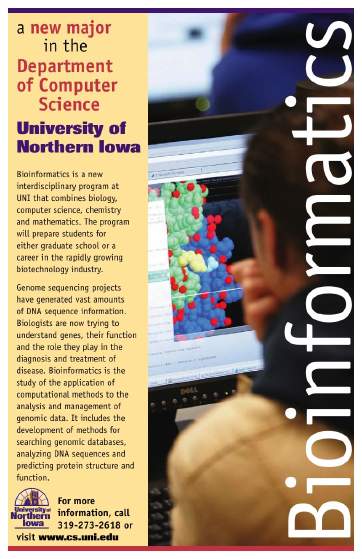TITLE: Market-Driven Academia
AUTHOR: Eugene Wallingford
DATE: May 31, 2006 1:07 PM
DESC:
-----
BODY:
In this era of rising costs, heightened competition,
and falling public support for education, universities
are becoming more and more driven by public relations.
I encountered a perfect example at a meeting this
morning.
One of the offices on campus was demoing a beta version
of a new on-line tool that will help the university
interact with students and community colleges. They
plan to go 'live' with with the tool later this summer.
Right now, they are introducing the tool to faculty
on campus, both to get feedback to improve the program
but also to build awareness of the tool among potential
stakeholders.
Further, before going live, these folks plan to visit
community colleges around the state to teach them about
the tool, to build awareness among another key group of
stakeholders. Then they'll present the tool to students
here at the university and elsewhere.
One of their reasons for the concerted effort to spread
the word so broadly was very pragmatic: After university
public relations sends out press releases on this new
tool, they expect the press to immediately ask community
college folks what they think of about the tool's effect
on them and their students. And the university wants
these folks to be able to respond to press queries in
an informed -- and, hopefully, positive -- way. Good
words in the press make for good public relations.
The fact that the university is making an effort to
educate potential users and stakeholders is not unusual;
I'd expect the same for any new tool. What struck me
was the deliberate effort to move the education stage
so early in the process, as a part of the PR initiative.
And the campaign of enlightenment won't be limited to
people directly affected by the tool and its use; the
university also plans to demo the tool to key legislators
in the state and in the districts served by the community
colleges. University/community college relations are
a hot political issue these days, and the university
wants fair attention given to its efforts to meet the
desires of the folks who hold the purse strings, and
the folks who elect those folks.
The PR campaign goes farther than just educating
stakeholders. The unit responsible for this tool is
already working on trademarking the name and logo of
the software, to solidify their use in PR and to prevent
unscrupulous competitors from swooping in after the
launch and stealing intellectual property. (That
flowery prose is mine, not the universities.)
I can't say that I blame the university for working
so hard to shape its image before the legislature and
the public at large. Perception is important. With
so many entities competing for state appropriations,
the university needs to sell itself better. Some
might say that public agencies aren't competing, but
they are. Within any given political culture, public
funding is limited, so choices have to be made.
So long as the university doesn't subvert its purpose,
or do things it wouldn't otherwise do for the sake of
publicity, playing the PR game seems an unavoidable
reality these days.
 I've already about my department's effort to
market a new program
in bioinformatics. I view our efforts as a reasonable
attempt to make information available to the people who
need it in order to make informed choices about careers
and educational opportunities. We will be moving forward
this summer to let more students and teachers know about
our program. For now, you can see a couple of pieces of
literature developed by the university's PR department
to help us, an 11"x17" poster (right) and an 8-1/2"x8-1/2"
bifold brochure
(PDF).
-----
I've already about my department's effort to
market a new program
in bioinformatics. I view our efforts as a reasonable
attempt to make information available to the people who
need it in order to make informed choices about careers
and educational opportunities. We will be moving forward
this summer to let more students and teachers know about
our program. For now, you can see a couple of pieces of
literature developed by the university's PR department
to help us, an 11"x17" poster (right) and an 8-1/2"x8-1/2"
bifold brochure
(PDF).
-----
 I've already about my department's effort to
market a new program
in bioinformatics. I view our efforts as a reasonable
attempt to make information available to the people who
need it in order to make informed choices about careers
and educational opportunities. We will be moving forward
this summer to let more students and teachers know about
our program. For now, you can see a couple of pieces of
literature developed by the university's PR department
to help us, an 11"x17" poster (right) and an 8-1/2"x8-1/2"
bifold brochure
(PDF).
-----
I've already about my department's effort to
market a new program
in bioinformatics. I view our efforts as a reasonable
attempt to make information available to the people who
need it in order to make informed choices about careers
and educational opportunities. We will be moving forward
this summer to let more students and teachers know about
our program. For now, you can see a couple of pieces of
literature developed by the university's PR department
to help us, an 11"x17" poster (right) and an 8-1/2"x8-1/2"
bifold brochure
(PDF).
-----